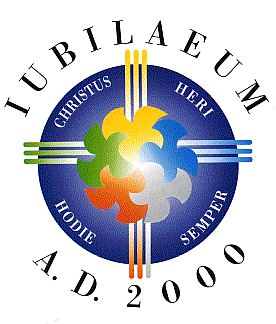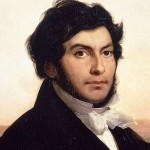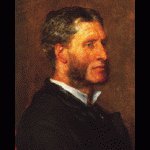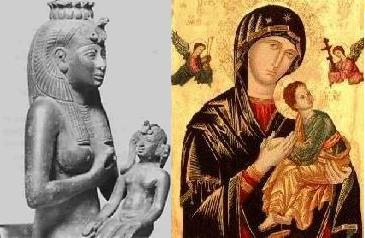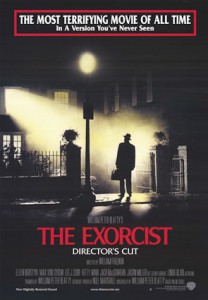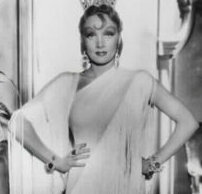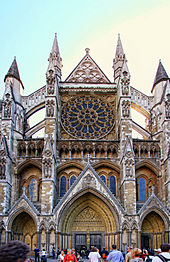This Week in Freethought History (December 22-28)
Here’s your week in Freethought History. This is more than just a calendar of events or mini-biographies – it’s a reminder that, no matter how isolated and alone we may feel at times, we as freethinkers are neither unique nor alone in the world.
Last Sunday, December 22, but in 1885, Pope Leo XIII Proclaimed an extraordinary jubilee. What is a jubilee? To most of us moderns, a jubilee is a special anniversary, or the celebration of it, but in both the Jewish and Christian traditions a Jubilee Year is a year of celebration and forgiveness of sin. The word “jubilee” comes from the Latin jubilaeus annus “year of jubilee,” from a Hebrew word Yobhel (יובל), meaning “ram’s-horn trumpet,” with which the jubilee year was proclaimed. “Thou shalt sanctify the fiftieth year,” we read in Leviticus 25:10, “and shalt proclaim remission to all the inhabitants of thy land: for it is the year of jubilee.” These “remissions” were to be obtained “by visiting the city of Rome and the venerable Basilica of the Prince of the Apostles,” according to the Catholic Encyclopedia. If you could not afford to make the journey, or if you were not up to the rigors of travel to Rome, then you could simply send the equivalent in the form of a cash donation and receive the same benefit. Since the pope confines the “spiritual privileges” to the churches of Rome itself, this serves to attract as many rich foreign Catholics as possible. The most recent Jubilee year, celebrating two millennia of Christianity, was in 2000. The Catholic Encyclopedia solemnly asserts that “it is impossible to doubt the evidence of innumerable witnesses as to the great moral renovation produced by these celebrations.” If so, the effect was local and temporary, much like modern fundamentalist revivals. And it didn’t prevent the Reformation and the rise of Protestantism – precisely because the Church was so corrupt and so greedy for selling treasures in heaven in exchange for cash down!.
Last Monday, December 23, but in 1790, French scholar Jean François Champollion was born. By age 11 Champollion could read the Bible in Hebrew. In addition to his native French, he also acquired Latin, Greek, Amharic, Sanskrit, Avestan, Pahlavi, Arabic, Syriac, Chaldean, Persian and Chinese. With his acquisition of Coptic, an Egyptian language, Champollion became interested in the race to translate the mysterious inscriptions of Ancient Egypt – something nobody had done before. By use of various inscriptions, but chiefly through the 2nd-century BCE Rosetta Stone, on 17 September 1822 Champollion read before the Academy of Inscriptions at Grenoble his first deductions on what the picture-writing meant. He has since been considered the father of modern Egyptology. As for Champollion’s religion, while the Catholic Encyclopedia claims him as one of the faithful, Champollion’s biographer, Hermione Hartleben, quotes from a Rationalist manuscript Champollion wrote at the age of thirty, saying that it is “undeniable that a change had taken place in his religious views.” In a collection of Champollion’s letters, Hartleben confirms this. Rarely does agreeing with the prevailing religious opinion land one in trouble, so we must not interpret Champollion’s later silence on religious matters as agreement. Like most public figures during the post-Revolutionary Royalist reaction, Champollion was compelled to keep his religious opinions discreet.
Last Tuesday, December 24, but in 1822, British critic and poet Matthew Arnold was born. Arnold was a leading literary critic and wrote many essays, which displayed a seriously Rationalist streak. On religion, he attempted to reconcile tradition with the results of then-new Higher Criticism, concluding along with Wordsworth that God is a “Stream of Tendency.” Arnold’s poem “Dover Beach,” written in 1851, seems to lament the loss of faith in a post-Enlightenment world, indulging the notion that faith provides beauty, joy, love, light, certitude, peace and help for pain. But in fact and in history, religious faith, the “Sea of Faith,” was less “a bright girdle furl’d” “round earth’s shore” and more like a straitjacket. In other poems, such as “Immortality” and “Requiescat,” it is clear that Arnold denied belief in immortality and a personal God. He defined the only God he recognized as “a Power, not ourselves. which makes for righteousness,” and religion as “morality touched with emotion.” In the preface to God and the Bible (1875), Arnold wrote, “The personages of the Christian heaven and their conversations are no more matter of fact than the personages of the Greek Olympus and their conversations.” It was Matthew Arnold who said, “The freethinking of one age is the common sense of the next.”
Last Wednesday, December 25 (Christmas on the Christian calendar), but in 4 BCE, “in the city of David a Saviour, which is Christ the Lord” was born. Or perhaps not. The story is told with minor divergences in the Gospels of Luke (c.85-95) and Matthew (c.80-100) – Matthew, the latest of the Synoptics, and based on Luke, adds the most embellishments – but Mark (c.70), the earliest Gospel, is silent on the birth story, and John (c.100-125), the latest Gospel, ignores it. It wasn’t easy reconciling dates: even the Catholic Encyclopedia has to acknowledge “that there is no month in the year to which respectable authorities have not assigned Christ’s birth.” The date of December 25 was not fixed in both the Eastern and Western churches until about 440. But early Christmas then wasn’t anything like the sentimental Victorian holiday forced on Ebenezer Scrooge in the story by Charles Dickens, to say nothing of the commercialized, secularized holiday we know today.
Christians strain mightily to obscure the plain historical fact that the mid-winter date of Christmas was borrowed from rival religions. Many of these older religions celebrated the birth of their savior-gods at the same time. But “celebrated” is the correct word here because they were all outlawed by Theodosius in 380 when Christianity became the official religion of the Roman Empire. But even in triumph, Christianity maintained the date at the Solstice – December 21 or shortly thereafter. The Egyptian Cult of Isis celebrated the birthday of the sun-god Horus in midwinter, employing a tableau of the divine child in a manger, with the mother Isis beside it. The pagan writer Macrobius (c.430) records that the Roman Saturnalia was a mid-winter tribute to the vegetation god. The festival included a display of presents, candles, and dolls. When the cult of Mithra was adopted from Persia, their midnight celebration of the birth of the savior-god, accompanied by blazing candles and clouds of incense, marked December 25th. In fact, the Mithraic temple was on Vatican Hill, close to the Christian settlement. Mithra (c600 BCE) – like Tammuz (c400 BCE), Adonis (c200 BCE), Apollo and Horus (c3000 BCE) – was a sun-god. So the “reason for the season” is not the son of any god, but the sun up in the sky!
Last Thursday, December 26, but in 1973, “The Scariest Movie of All Time,” The Exorcist was released in the U.S. Initially earning an MPAA rating of “X,” it subsequently settled on an “R” for violence, horror effects, rampant blasphemy, and some sexual manipulation of a crucifix. The Exorcist sets up a classic confrontation between religion and science, in a battle over the life, and presumably the soul, of a 12-year-old girl who is behaving strangely. When all scientific methods fail to discover the cause, the younger priest reluctantly steps aside as the older priest begins a casting-out ceremony that becomes the centerpiece of the film. To no one’s surprise, there was an upsurge in demand for exorcisms just after the release of the film. The The Exorcist endorses exorcisms and, as late as November 2010, in Baltimore, Maryland, more than 100 Roman Catholic priests and bishops gathered for a two-day closed conference on exorcism. According to Robert Todd Carroll’s Skeptic’s Dictionary, “Most, if not all, cases of alleged demonic possession of humans probably involve either people with brain disorders ranging from epilepsy to schizophrenia and Tourette’s syndrome… the behaviors of the possessed resemble very closely the behaviors of those with electrochemical, neurochemical or other physical or emotional disorders…” We can read about secular exorcisms today from therapists treating patients with so-called Multiple Personality Disorder (MPD or dissociative identity disorder): psychiatrists ridding patients of their “entities,” which are most likely artifacts of the psychiatrist’s suggestion. Is The Exorcist a triumph of superstition over science? Whether demons or “personalities,” there is just as much evidence of the existence of either – which is to say: none.
Yesterday, December 27, but in 1901, German-American actress and singer Marlene Dietrich was born. Early on, she became a performer, working briefly as a pit violinist for silent films and as a vaudeville chorus girl. Leaping out of the pit, Dietrich took her first bit part in The Little Napoleon (Der kleine Napoleon, 1923), met her future husband, Rudolf Sieber, on the set of another film she made that year, and continued to work on stage and in film through the 1920s. Her breakthrough film role was in The Blue Angel (1930), which also introduced Dietrich’s signature song, “Falling in Love Again.” She finished out the 1930s becoming the best-paid actress in film. Although reared in the German Lutheran church, Marlene Dietrich lost her faith during her time as a USO entertainer, saying, “I lost my faith during the war and can't believe they are all up there, flying around or sitting at tables, all those I've lost.” She went on in her autobiography—
Back in my early childhood I learnt that God doesn’t fight on any army’s side. So there was little point in praying. Nonetheless, before every battle, prayers were read, all kinds of incantations were incited, staged by all sorts of preachers. We attended these ceremonies and I saw how all the soldiers stood in place, as though they couldn’t believe their ears. I couldn’t believe it either, but I counted for nothing… Since then, I have given up belief in God, in a ‘light’ that leads us, or anything of that sort. Goethe said, if God created this world, he should review his plan.
Despite Dietrich being an atheist for the last 50 years of her life, her family arranged a funeral ceremony at La Madeleine in Paris, a Roman Catholic church. Dietrich, during her last 11 reclusive years in Paris, supposedly converted to Roman Catholicism, although this may be the family’s attempt to save her from the fires of hell. Even if true, it must be explained how a deathbed conversion is salutary to the legacy of the great film and stage star: Marlene Dietrich lived an atheist, but if she only died a Catholic, maybe God really should review his plan!
Today, December 28, but in 1065, Westminster Abbey was consecrated. The now-traditional place of coronation and burial for English monarchs, located just to the west of Westminster Palace, was originally a Benedictine abbey built in the Romanesque style between 1045-1050. Westminster was rebuilt in the Gothic style we recognize today between 1245-1517. The consecration rite itself, according to the Catholic Encyclopedia, is superior to a mere blessing, which may be performed by a priest. Consecration, at least today, is a rite reserved to a bishop, rendering it a place in which favors are more graciously granted by God. But, if God watches over Westminster Abbey, one would think He might have prevented King Henry VIII from seizing and closing it during the Dissolution of the Monasteries (1534, 1540). Furthermore, there is a curious collection of nonbelievers residing eternally in and around Westminster Abbey: the agnostic composer Ralph Vaughan Williams (1872-1958) ; the notoriously skeptical statesmen William Pitt, 1st Earl of Chatham (1708-1778), and his son, William Pitt the Younger (1759-1806) ; the apostate poet Geoffrey Chaucer (1343?-1400) ; the admittedly non-Christian poet Robert Browning (1812-1889); Charles Dickens (1812-1870), who held only a sentimental regard for Christianity, while fighting against the social evils its adherents caused; the Deist John Dryden (1631-1700); the actor and theatrical manager David Garrick (1717-1779), who partied with Baron D’Holbach; and the decidedly non-Christian poet Alfred, Lord Tennyson (1809-1892). But the biggest surprise of all at Westminster Abbey would be the man whose scientific theory removed God from the role of Creator: the admittedly agnostic Charles Darwin!
Other birthdays and events this week—
December 25: English writer, actor and homosexual rights campaigner Quentin Crisp was born (1908).
December 25: Pioneer American teacher, nurse, and humanitarian Clara Barton was born (1821).
December 27: French chemist and discoverer of the germ theory of disease, Louis Pasteur was born (1822).
We can look back, but the Golden Age of Freethought is now. You can find full versions of these pages in Freethought history at the links in my blog, FreethoughtAlmanac.com.
